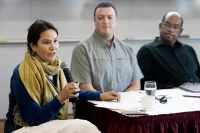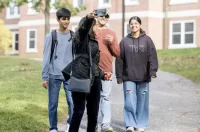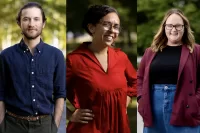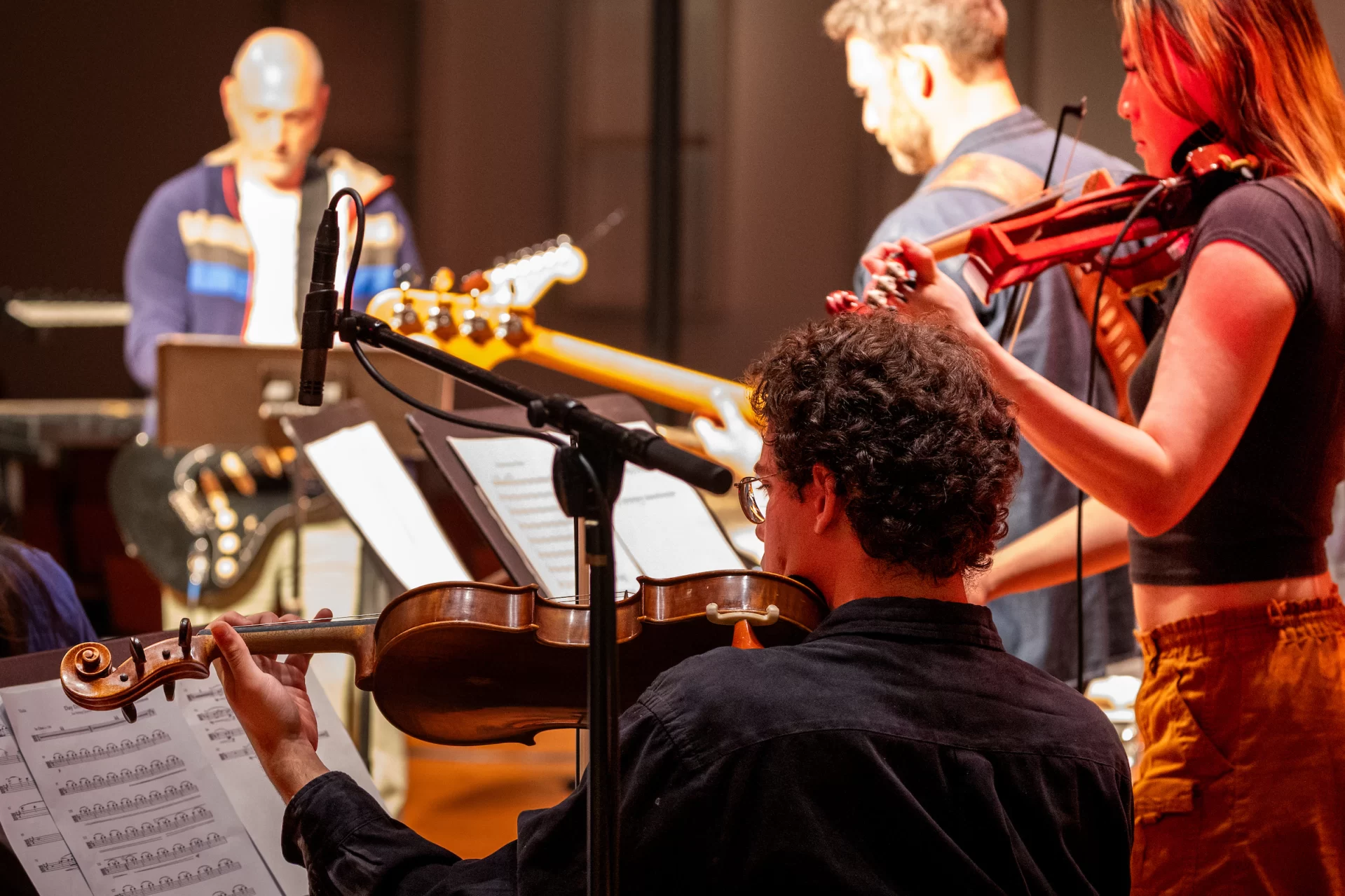
The response to mass public shootings such as those in Parkland, Pittsburgh, and Las Vegas has become depressingly predictable.
“Every time there’s a mass shooting, we say the same things, and people argue past each other, and then we do nothing,” says Michael Rocque, a criminologist and an assistant professor of sociology at Bates. “And then the next one comes along.”
Part of the problem with the public conversation around such shootings, says Rocque, is that it’s fueled by politics and perceptions, both poorly supported by data.
“I see all kinds of research that uses slightly [divergent] terms, or you’re not really sure where the data come from,” he says. “There is no systematic, comprehensive data set that we can all draw on.”
But that will change during the next three years, and Rocque is one of three researchers who are making it happen, thanks to a nearly $499,000 grant from the National Institute of Justice, the research arm of the U.S. Department of Justice.
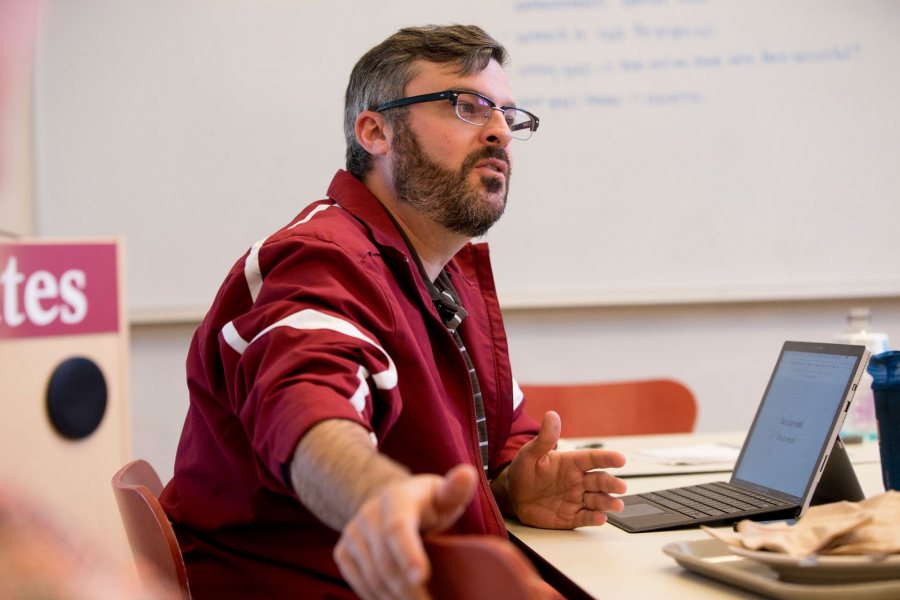
Assistant Professor of Sociology Michael Rocque, shown here at a December 2016 planning meeting for the college’s Martin Luther King Jr. Day observance, is one of three researchers who will use a federal grant to study mass shootings in the U.S. (Phyllis Graber Jensen/Bates College)
Titled “The Nature, Trends, Correlates, and Prevention of Mass Public Shootings in America, 1976-2018,” the team’s NIJ-funded project comprises six ambitious research goals — including a forecast of the severity of mass public shootings in years to come.
“Every time there’s a mass shooting, we say the same things, and people argue past each other, and then we do nothing.”
Principal investigator for the project is Northeastern University criminologist James Alan Fox, a prominent authority on violent crime. Working with Fox as co-principal investigators are Rocque and Grant Duwe, director of research and evaluation at the Minnesota Department of Corrections.
“The most important object of this grant,” says Rocque, is to illuminate mass public shootings with data that is publicly accessible and broadly accepted, and whose provenance is clear. (There is no standard definition of a mass public shooting at the moment. The definition used by Rocque and his colleagues is representative: an incident in which four or more victims are fatally shot in a public location within a 24-hour period, and not in the context of other criminal activity.)
“If we’re having a conversation about data rather than anecdotes, then I think we’ll be in a better place,” he says. “We can actually build some strong empirical evidence, a foundation to actually start talking about these things. And maybe we can move forward in a way that actually helps make society safer.”
In addition to the shooting-severity outlook, here are the proposed research outcomes for the project:
- detailed descriptions, comprising dozens of variables, of more than 140 mass public shootings since 1976;
- an evaluation of the impact of the 1994 federal assault weapons ban on the incidence and severity of mass shootings;
- an evaluation of the effects of state-level gun legislation, such as concealed-carry laws, on the incidence and severity of such shootings;
- an assessment of the extent to which mass public shootings reflect the copycat effect, which is when an individual seeks to emulate a crime, and “contagion,” when a crime provokes a rash of similar offenses;
- and a comparison between completed mass shootings and thwarted shooting plots.
Rocque, who in addition to his Bates position is a senior research adviser for Maine’s Department of Corrections, has studied mass shooting incidents for years, starting with an article on school shootings that he wrote for the campus paper when he was an undergraduate at the University of Maine.
He studied under Fox at Northeastern, where he earned a doctorate in 2013. And, he says, “Grant Duwe and I have worked together on a couple projects related to our work in corrections.”
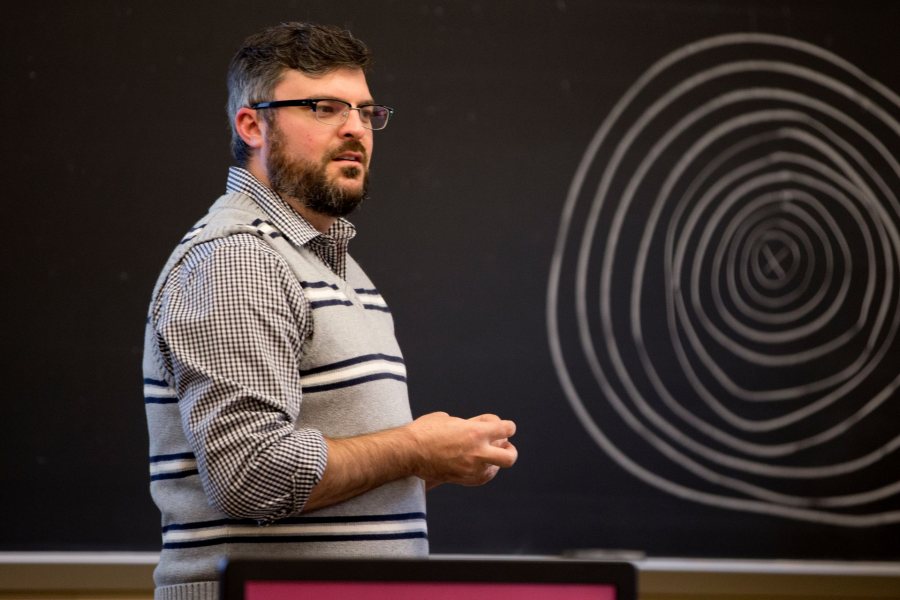
“If we’re having a conversation about data rather than anecdotes, then I think we’ll be in a better place,” says Michael Rocque, here teaching his course “Thinking Sociologically with Numbers” in 2015. (Phyllis Graber Jensen/Bates College)
The NIJ project “just came together as an interesting way to help advance our knowledge of the phenomenon, but also allow us to work together on a different project,” Rocque says. The trio’s proposal was one of four, including two others related to mass shootings, that were approved in a funding round dedicated to firearms violence.
Much of the data for the project already exists but needs to be augmented with additional research or analyzed in a new way. For instance, the set of shooting descriptions will be based on data that Duwe has compiled, with the research team determining what variables should be added.
“We’ll have to do some digging [to create] what will basically be a huge, comprehensive data set on the assailant, the victims, their background, the location, and how and where the shooting was reported” in the media, including social media, Rocque explains.
“It’s possible for mass public shootings to be both a gun problem and a mental health problem.”
Similarly, predicting the severity of future mass public shootings will be done by applying a statistical technique called power law distribution to existing data about the number of shooting incidents and the number of victims.
Through newspaper op-eds as well as the traditional academic channels, Duwe, Rocque, and Fox have already deployed data to address common (mis)perceptions about mass shootings. Writing in Politico in October 2017, Duwe pointed out that, despite what feels like a recent onslaught of such shootings, their frequency hasn’t changed much since the 1980s and ’90s.
What has changed, he wrote, offering cold comfort, is that shootings have instead become more deadly — the numbers of victims and of deaths have increased.
“The actual number of incidents seems to be relatively stable,” says Rocque. “But you wouldn’t know that, in part because people use different definitions of mass shootings and in part because the media seemingly have given it more attention of late.”
Rocque’s first article on mass shootings appeared in the campus paper when he was an undergraduate at the University of Maine.
Rocque, who is a familiar presence on op-ed pages in Maine and beyond, and Duwe last February challenged the notion that “mass shooters are not disproportionately mentally ill” (a phrase widely disseminated following the Parkland tragedy).
Writing in the Los Angeles Times, they cited research showing that, in fact, the opposite is true: More than half of mass shooters either had been diagnosed with or had shown signs of mental illness before the attack. That’s more than triple the rate of mental illness among American adults.
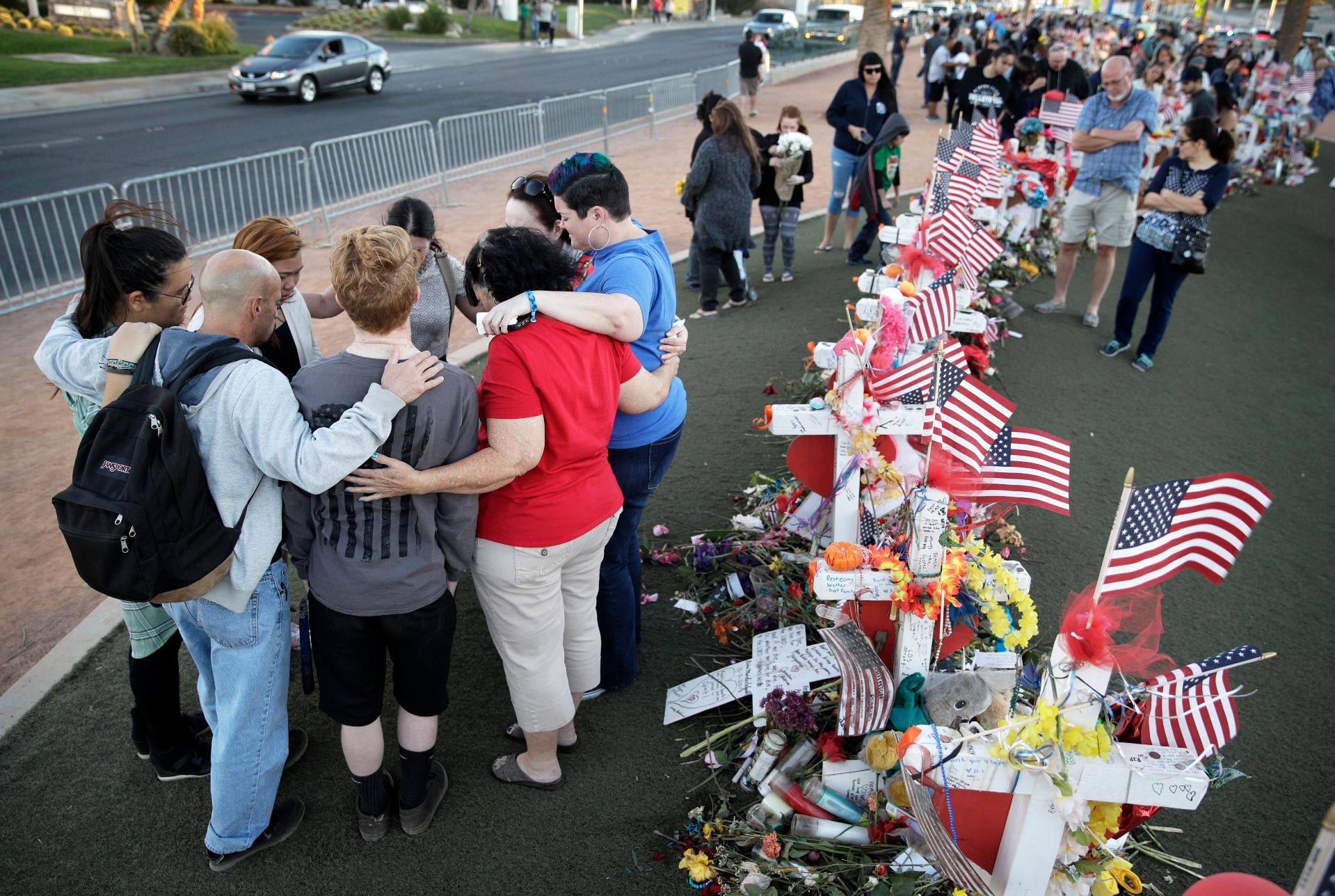
On Oct. 9, 2017, people pray at a makeshift memorial in Las Vegas, Nev., for victims of the mass shooting in the city eight days earlier. (AP Photo/John Locher)
But Rocque and Duwe also cautioned that most people with mental illness are not violent and that calling mass public shootings “strictly a mental health problem rather than a gun problem” is also wrong. “It’s possible for mass public shootings to be both a gun problem and a mental health problem,” they wrote.
In the current political climate, it seems all but impossible to agree on ways to curtail mass public shootings. Yet such agreement definitely won’t be possible without a common foundation of data to build upon.
With that foundation, says Rocque, “we can start to get past, hopefully, some of these conversations that are so political and so personal, and get to a place where we can better understand these events and why they happen.”
